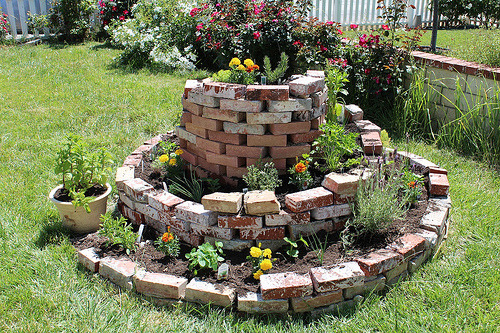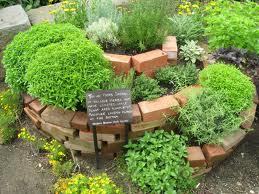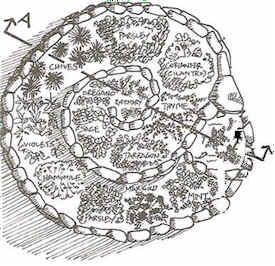How Do You (“how Does One”) Shop For A Therapist?
How do you (“how does one”) shop for a therapist?
Can you call up a therapist and be like “hi, I’m therapist shopping”? Can you schedule an appointment with a therapist and then be like “actually I have some questions and I want to spend part of this appointment talking about your practice and whether or not it is garbage?”? Are you expected to phone interview/screen your therapists if you are shopping around for a therapist?
If you’re seeing one therapist are you supposed to/not supposed to tell them if you start seeing another therapist? Is it possible to cheat on your therapist?
More Posts from Sunlightandbasil and Others
10 Ways to Observe the Moon for International Observe the Moon Night
On Saturday, October 5, we will host the 10th annual International Observe the Moon Night. One day each year, everyone on Earth is invited to observe and learn about the Moon together, and to celebrate the cultural and personal connections we all have with our nearest celestial neighbor! This year is particularly special as we mark the 50th anniversary of the Apollo 11 Moon landing while looking forward to our Artemis program, which will send the first woman and next man to the Moon.
There are many ways to participate in International Observe the Moon Night. You can attend an event, host your own or just look up! Here are 10 of our favorite ways to observe the Moon.
1. Look up

Image Credit: NASA’s Scientific Visualization Studio/Ernie Wright
The simplest way to observe the Moon is simply to look up. The Moon is the brightest object in our night sky, the second brightest in our daytime sky and can be seen from all around the world — from the remote and dark Atacama Desert in Chile to the brightly lit streets of Tokyo. On October 5, we have a first quarter Moon, which means that the near side of the Moon will be 50 percent illuminated. The first quarter Moon is a great phase for evening observing. Furthermore, the best lunar observing is typically along the Moon’s terminator (the line between night and day) where shadows are the longest, rather than at full Moon. See the Moon phase on October 5 or any other day of the year!
2. Peer through a telescope or binoculars

Image Credit: NASA/Molly Wasser
With some magnification help, you will be able to focus in on specific features on the Moon. In honor of this year’s 50th Anniversary of the Apollo 11 Moon Landing, see if you can find Mare Tranquillitatis (Sea of Tranquility)! Download our Moon maps for some guided observing on Saturday.
3. Photograph the Moon

Image Credit: NASA/GSFC/Arizona State University
Our Lunar Reconnaissance Orbiter (LRO) has taken more than 20 million images of the Moon, mapping it in stunning detail. You can see featured, captioned images on LRO’s camera website, like the crater seen above. And, of course, you can take your own photos from Earth. Check out our tips on photographing the Moon!
4. Relax on your couch

Image Credit: NASA’s Scientific Visualization Studio/Ernie Wright
Is it cloudy? Luckily, you can observe the Moon from the comfort of your own home. The Virtual Telescope Project will livestream the Moon from above the Roman skyline. Or, you can take and process your own lunar images with the MicroObservatory Robotic Telescopes. Would you prefer a movie night? There are many films that feature our nearest neighbor. Also, you can spend your evening with our lunar playlist on YouTube or this video gallery, learning about the Moon’s role in eclipses, looking at the Moon phases from the far side and seeing the latest science portrayed in super high resolution.
5. Touch the topography

Image Credit: NASA GSFC/Jacob Richardson
Observe the Moon with your hands! If you have access to a 3D printer, you can peruse our library of 3D models and lunar landscapes. This collection of Apollo resources features 3D models of the Apollo landing sites using topographic data from LRO and the SELENE mission. The 3D printed model you see above is of the Ina D volcanic landform.
6. Make and admire Moon art

Image Credit: LPI/Andy Shaner
Enjoy artwork of the Moon and create your own! For messy fun, lunar crater paintings demonstrate how the lunar surface changes due to frequent meteorite impacts.
7. Listen to the Moon
Image Credit: NASA Explorers: Apollo/System Sounds
Treat your ears this International Observe the Moon Night. Our audio series, NASA Explorers: Apollo features personal stories from the Apollo era to now, including yours! You can participate by recording and sharing your own experiences of Apollo with us. Learn some lunar science with the second season of our Gravity Assist podcast with NASA Chief Scientist, Jim Green. Make a playlist of Moon-themed songs. For inspiration, check out this list of lunar tunes. We also recommend LRO’s official music video, The Moon and More, featuring Javier Colon, season 1 winner of NBC’s “The Voice.” Or you can watch this video featuring “Clair de Lune,” by French composer Claude Debussy, over and over.
8. Take a virtual field trip

Image Credit: NASA/SSERVI
Plan a lunar hike with Moon Trek. Moon Trek is an interactive Moon map made using NASA data from our lunar spacecraft. Fly anywhere you’d like on the Moon, calculate the distance or the elevation of a mountain to plan your lunar hike, or layer attributes of the lunar surface and temperature. If you have a virtual reality headset, you can experience Moon Trek in 3D.
9. See the Moon through the eyes of a spacecraft

Image Credit: NASA/GSFC/MIT
Visible light is just one tool that we use to explore our universe. Our spacecraft contain many different types of instruments to analyze the Moon’s composition and environment. Review the Moon’s gravity field with data from the GRAIL spacecraft or decipher the maze of this slope map from the laser altimeter onboard LRO. This collection from LRO features images of the Moon’s temperature and topography. You can learn more about the different NASA missions to explore the Moon here.
10. Continue your observations throughout the year

Image Credit: NASA’s Scientific Visualization Studio/Ernie Wright
An important part of observing the Moon is to see how it changes over time. International Observe the Moon Night is the perfect time to start a Moon journal. See how the shape of the Moon changes over the course of a month, and keep track of where and what time it rises and sets. Observe the Moon all year long with these tools and techniques!
However you choose to celebrate International Observe the Moon Night, we want to hear about it! Register your participation and share your experiences on social media with #ObserveTheMoon or on our Facebook page. Happy observing!
Make sure to follow us on Tumblr for your regular dose of space: http://nasa.tumblr.com.

Notetaking
Sound Note - take notes while you record audio
Evernote - notetaking that syncs across platforms
Paper 53 - minimal notetaking that syncs
Microsoft OneNote - collaboration and syncing, best for Office users
Google Keep - jot things down, best for Google suite users
Notability - take notes and annotate PDFs
Mindly - create mind maps
Day One - a digital journal
Flash Cards
Quizlet - the quintessential flash card app
StudyBlue - another commonly used app
Cram - best for its “cram mode”
Eidetic - uses spaced repetition for effective memorization
Planner
My Study Life - schedules, tasks, reminders, and more
StudyCal - keeps track of tasks, exams, and grades
24me - automated reminders and event planning
iStudiez - schedule and prioritized task list
Google Calendar - a calendar, best for Google users
Glass Planner - a calendar and to do list with incredible functionality
To Do List
Clear - organized to-do and reminders
MinimaList - simple to-do and focus timer
Trello - collaborative project organizer
Todoist - clean and functional task manager
Default notes app on your phone
Time Management
Forest - plant trees by staying focused
Pomotodo - pomodoro timer with to-do list
Timeglass - custom timers
Tide - pomodoro with white noise
Alarmy - forces you out of bed
Pillow - smart alarm that tracks sleep cycles
Productivity
Workflow - automate tasks
Habitica - turn your habits into an RPG
Continuo - simple, colorful activity tracking
Freedom - block distracting apps
Free Learning
Coursera - free MOOCs
TED - listen to Ted Talks
Duolingo - language learning
Memrise - spaced repetition language vocabulary
Khan Academy - free video lessons
Ambient Noise
8tracks - curated playlists
Spotify - online music streaming
Coffitivity - cafe ambience
Noisli - background sound generator
Rain Rain - rain sounds
Binaural - binaural beats
Health
Rockin Ramen - recipes based on ramen
MealBoard - meal planning
Lifesum - healthy eating
Stop Breath And Think - mindfulness meditation
Pacifica - mental health management
Sworkit - personalized video workouts
Waterlogged - hydration tracker
Reference
WolframAlpha - Google on steroids
Oxford Dictionary - all of English at your fingertips
RefMe - citation generator
PhotoMath - solve math problems by taking a photo
Mathway - step by step math help
Desmos - free graphing calculator
Wikipedia - not the best source, but it’s handy
Miscellaneous
Companion - stay safe when walking alone
Mint - money management
Toshl - finance manager
Tiny Scanner - scan documents

You should Not use popcorn time and you should Not use a VPN while using it

07/28/17
JESSICA CHOU Has A YouTube Channel Teaching Women About Basic Vehicle Maintenance
This is quite an interesting YouTube channel concept, and it shows that … Asian chicks kick ass! JESSICA CHOU is a young Asian American woman who has a YouTube channel which basically teaches other girls and women about how to fix their car.
“I think we don’t see as many female mechanics because the industry is still so heavily dominated by men. When we think of a mechanic, we think of men. When we see ads or posters of mechanics, we see men. When we see shows about cars, we see men. It will take a long time to change all of this, but in the 10 short months that I’ve been on this journey, I’ve met so many incredible people who are out to change the game.”
Free Online Language Courses

Here is a masterpost of MOOCs (massive open online courses) that are available, archived, or starting soon. I think they will help those that like to learn with a teacher or with videos. You can always check the audit course or no certificate option so that you can learn for free.
American Sign Language
ASL University
Sign Language Structure, Learning, and Change
Arabic
Arabic for Global Exchange (in the drop-down menu)
Intro to Arabic
Madinah Arabic
Moroccan Arabic
Arabe (taught in French)
Catalan
Intro to Catalan Language & Society
Intro to Catalan Sign Language
Chinese
Beginner
Basic Chinese I. II, III, IV , V
Basic Mandarin Chinese I & II
Beginner’s Chinese
Chinese for Beginners
Chinese Characters
Chinese for HSK 1
Chinese for HSK 2
Chinese for HSK 3 I & II
HSK Level 1
Mandarin Chinese
Mandarin Chinese for Business
More Chinese for Beginners
Start Talking Mandarin Chinese
UT Gateway to Chinese
Chino Básico (Taught in Spanish)
Intermediate
Chinese Stories
Intermediate Business Chinese
Intermediate Chinese Grammar
Dutch
Introduction to Dutch
English
Online Courses here
Resources Here
Faroese
Faroese Course
Finnish
A Taste of Finnish
Basic Finnish
Finnish for Immigrants
Finnish for Medical Professionals
French
Beginner
AP French Language and Culture
Basic French Skills
Beginner’s French: Food & Drink
Diploma in French
Elementary French I & II
Français Interactif
French in Action
French Language Studies I, II, III
French: Ouverture
Intermediate & Advanced
French: Le Quatorze Juillet
Passe Partout
La Cité des Sciences et de Industrie
Vivre en France - A2
Vivre en France - B1
Frisian
Introduction to Frisian (Taught in English)
Introduction to Frisian (Taught in Dutch)
German
Beginner
Beginner’s German: Food & Drink
Conversational German I, II, III, IV
Deutsch im Blick
Diploma in German
German at Work
Rundblick-Beginner’s German
Intermediate
German: Regionen Traditionen und Geschichte
Landschaftliche Vielfalt
Gwich’in
Introduction to Gwich’in Language
Hebrew
Biblical Hebrew
Know the Hebrew Alphabet
Teach Me Hebrew
Hindi
A Door into Hindi
Business Hindi
Virtual Hindi
Icelandic
Icelandic 1-5
Indonesian
Learn Indonesian
Irish
Introduction to Irish
Irish 101
Irish 102
Italian
Beginner
Beginner’s Italian: Food & Drink
Beginner’s Italian I
Introduction to Italian
Italian for Beginners 1 , 2, 3 , 4 , 5, 6
Intermediate & Advanced
AP Italian Language and Culture
Intermediate Italian I
Advanced Italian I
Letteratura italiana
Japanese
Genki
Japanese JOSHU
Japanese Pronunciation
Sing and Learn Japanese
Tufs JpLang
Kazakh
A1-B2 Kazakh (Taught in Russian)
Korean
Beginner
First Step Korean
How to Study Korean
Introduction to Korean
Learn to Speak Korean
Pathway to Spoken Korean
Intermediate
Intermediate Korean
Nepali
Beginner’s Conversation and Grammar
Norwegian
Introduction to Norwegian
Norwegian on the Web
Portuguese
Curso de Português para Estrangeiros
Pluralidades em Português Brasileiro
Russian
Beginner
Easy Accelerated Learning for Russian
Advanced
Reading Master and Margarita
Russian as an Instrument of Communication
Siberia: Russian for Foreigners
Spanish
Beginner
AP Spanish Language & Culture
Basic Spanish for English Speakers
Beginner’s Spanish: Food & Drink
Introduction to Spanish
Restaurants and Dining Out
Spanish for Beginners 1, 2, 3, 4, 5, 6
Spanish Vocabulary
Intermediate
Spanish: Ciudades con Historia
Spanish: Espacios Públicos
Advanced
Corrección, Estilo y Variaciones
Leer a Macondo
Spanish:Con Mis Propias Manos
Spanish: Perspectivas Porteñas
Swedish
Intro to Swedish
Swedish Made Easy 1, 2, & 3
Ukrainian
Read Ukrainian
Ukrainian Language for Beginners
Welsh
Beginner’s Welsh
Discovering Wales
Multiple Languages
Ancient Languages
More Language Learning Resources & Websites!
Last updated: April 1, 2018
15 reasons to build an herb spiral for your garden (By Jean Bardot, Natural News)

(By Jean Bardot, Natural News)
Whether you’re a city mouse or a country mouse — with a high-rise patio or 1000 acres — building an herb spiral near your kitchen allows you to partake in the sustainable permaculture revolution and have fresh organic culinary herbs at your fingertips. An herb spiral is a compact vertical garden built on specific principles allowing for individualized management of wind and water flow to create the ideal garden in a limited amount of space.

The spiral is a natural form that provides an efficient method for managing space, storing and sorting. Using the natural universal design of a spiral, the forces of gravity and water flow are utilized to their fullest allowing for proper drainage downhill. Herbs that thrive on drier soils live at the top, whereas those needing more moisture reside at the bottom where water collects. This form allows for planting of a widely diverse number of plants, and creates natural, sunny and shady areas — a perfect miniature microclimate landscape environment. The herb spiral as a permaculture form that allows you to create your own ecosystem and become self sufficient. The format can be adapted to large gardens if space is available.
Stone or block building materials allow for retention of heat and insulate plants in colder weather or at night, while acting as the backbone for the structure. Collect water at the bottom and have a small fish or frog pond or even a bog and grow edible water plants. An herb spiral can be built even on a concrete foundation and filled with the richest biodynamic, organic earth to support any plants included.

The spiral should always be built to move in the direction of water drainage in whatever hemisphere it’s located in — for example, in the Northern hemisphere, water runs off in a clockwise direction and the opposite is true for the Southern hemisphere. This allows for optimal positioning of the pond at the bottom and reduces evaporation. The spiral can be built as a round or oval shape to take advantage of the movement of summer sunlight.

15 REASONS TO BUILD AN HERB SPIRAL FOR YOUR PERMACULTURE GARDEN
1. Maximize growing space to grow more food. 2. Multiple microclimates available for optimal plant growth.

3. Healthier plants where growing needs are met and companion planting is easy to reduce insect problems and foster beneficial plant relationships for better growth. 4. Aesthetic garden focal point.

5. Maximizes space even in very small areas on top of concrete or in high-rise buildings. 6. Harvesting access is easy and all plants are effortlessly accessible. 7. No bending, everything is at waist height — hooray!

8. Save money by growing your own food. 9. Eat organic, using heirloom seeds and avoid pesticides and genetically engineered seeds. 10. Reduces maintenance, little weeding and easy to turn and mulch.

11. Manage water amounts and use natural forces to perpetuate the growing season. 12. Reduce building costs when you use local available materials. 13. Use drip irrigation or a small sprinkler for easy watering and irrigation.

14. Create a bio-diverse habitat for creatures who come to visit. 15. Build an herb spiral to grow medicinal herbs to avoid Big Pharm drugs.
Sources for this article: http://www.mitra.biz http://themicrogardener.com http://welcometovoluntarysimplicity.wordpress.com http://www.mysquarefootgarden.net/creating-an-herb-spiral/

Free open course on entomology focusing on human-insect interactions. I think that this may be of interest to ya’ll since it’s meant for everyone who loves bugs! And it’s FREE.
-
 themeaningoflifeischeese reblogged this · 1 week ago
themeaningoflifeischeese reblogged this · 1 week ago -
 hurtbyinvisiblescissors liked this · 2 weeks ago
hurtbyinvisiblescissors liked this · 2 weeks ago -
 eclectichellmouth reblogged this · 2 weeks ago
eclectichellmouth reblogged this · 2 weeks ago -
 royalebynature liked this · 1 month ago
royalebynature liked this · 1 month ago -
 229mga liked this · 1 month ago
229mga liked this · 1 month ago -
 in-parentheses reblogged this · 2 months ago
in-parentheses reblogged this · 2 months ago -
 yloiseconeillants liked this · 3 months ago
yloiseconeillants liked this · 3 months ago -
 raynshyu reblogged this · 3 months ago
raynshyu reblogged this · 3 months ago -
 acrylic-kitten liked this · 3 months ago
acrylic-kitten liked this · 3 months ago -
 karoosah reblogged this · 3 months ago
karoosah reblogged this · 3 months ago -
 basilicux liked this · 3 months ago
basilicux liked this · 3 months ago -
 ratkingdad liked this · 3 months ago
ratkingdad liked this · 3 months ago -
 drummergirl345 reblogged this · 3 months ago
drummergirl345 reblogged this · 3 months ago -
 amy-oswin-lovegood reblogged this · 3 months ago
amy-oswin-lovegood reblogged this · 3 months ago -
 garryblogs reblogged this · 3 months ago
garryblogs reblogged this · 3 months ago -
 gigarchomp liked this · 3 months ago
gigarchomp liked this · 3 months ago -
 karikangaroo reblogged this · 3 months ago
karikangaroo reblogged this · 3 months ago -
 arasnealashandr reblogged this · 3 months ago
arasnealashandr reblogged this · 3 months ago -
 arasnealashandr liked this · 3 months ago
arasnealashandr liked this · 3 months ago -
 boglord reblogged this · 3 months ago
boglord reblogged this · 3 months ago -
 lilbittymonster reblogged this · 3 months ago
lilbittymonster reblogged this · 3 months ago -
 decraziness reblogged this · 3 months ago
decraziness reblogged this · 3 months ago -
 queer-omens-in-the-archives reblogged this · 3 months ago
queer-omens-in-the-archives reblogged this · 3 months ago -
 bubblegumballoons liked this · 4 months ago
bubblegumballoons liked this · 4 months ago -
 toseuteu reblogged this · 4 months ago
toseuteu reblogged this · 4 months ago -
 hedgehog-cynder reblogged this · 4 months ago
hedgehog-cynder reblogged this · 4 months ago -
 hedgehog-cynder liked this · 4 months ago
hedgehog-cynder liked this · 4 months ago -
 solstarburst reblogged this · 5 months ago
solstarburst reblogged this · 5 months ago -
 the-most-medium-lesbian reblogged this · 5 months ago
the-most-medium-lesbian reblogged this · 5 months ago -
 zbalthazar liked this · 5 months ago
zbalthazar liked this · 5 months ago -
 jeidai reblogged this · 6 months ago
jeidai reblogged this · 6 months ago -
 etherealembrace liked this · 7 months ago
etherealembrace liked this · 7 months ago -
 laqueus-ludovicus reblogged this · 7 months ago
laqueus-ludovicus reblogged this · 7 months ago -
 willyoubemydarling liked this · 8 months ago
willyoubemydarling liked this · 8 months ago -
 ravensncrowsx reblogged this · 8 months ago
ravensncrowsx reblogged this · 8 months ago -
 texasturtlefan reblogged this · 8 months ago
texasturtlefan reblogged this · 8 months ago -
 kaeshidamashii liked this · 8 months ago
kaeshidamashii liked this · 8 months ago -
 acespacevoid reblogged this · 9 months ago
acespacevoid reblogged this · 9 months ago -
 acespacevoid liked this · 9 months ago
acespacevoid liked this · 9 months ago -
 russenoire liked this · 9 months ago
russenoire liked this · 9 months ago -
 sexyt-a-r-d-i-s11 reblogged this · 9 months ago
sexyt-a-r-d-i-s11 reblogged this · 9 months ago -
 sexyt-a-r-d-i-s11 liked this · 9 months ago
sexyt-a-r-d-i-s11 liked this · 9 months ago -
 domesticfanfic liked this · 10 months ago
domesticfanfic liked this · 10 months ago -
 smokeywindowsill liked this · 10 months ago
smokeywindowsill liked this · 10 months ago -
 computerizedsphinx reblogged this · 11 months ago
computerizedsphinx reblogged this · 11 months ago -
 tearsonfreshfruits liked this · 11 months ago
tearsonfreshfruits liked this · 11 months ago

